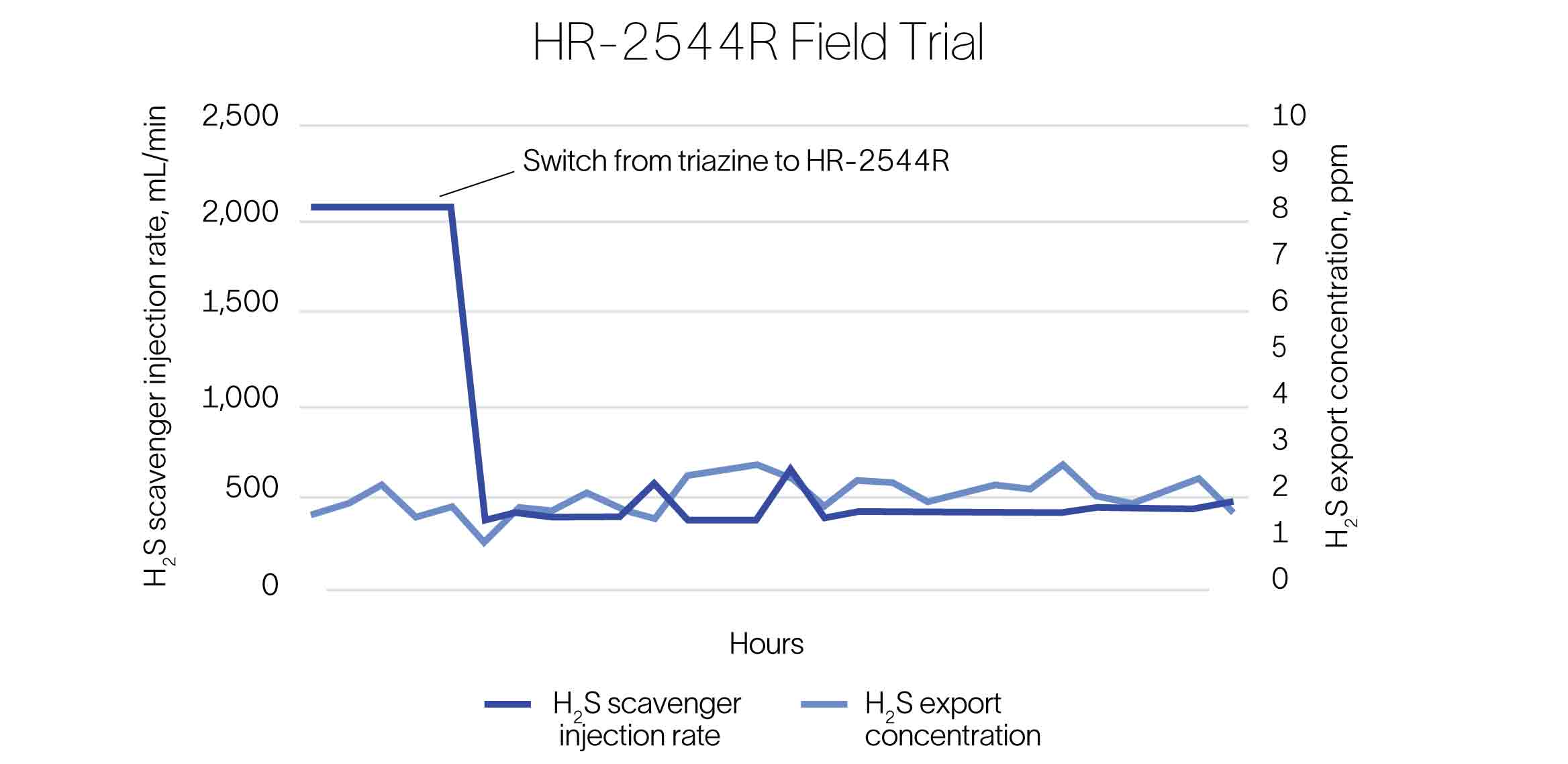Reduce production risk and improve returns.
Non-triazine H2S scavenger boosts production by 260,000 BOE and reduces carbon footprint
Replacing triazine with an H2S scavenger supplied by SLB on an offshore installation in the North Sea eliminated deposits in surface processing equipment that were causing production shutdowns. The non-triazine solution also reduced chemical use by 79%, which decreased carbon footprint, risks, and cost while increasing the number of wells that could be serviced by the existing injection pump.
Emissions reduction
Hazmat reduction
More uptime
Lower HSE risk
Oil and gas produced from a North Sea field contain high levels of H2S. Minimizing this contaminant is crucial for personnel safety and compliance with refinery specifications to maximize the sale value of exported hydrocarbons. Consistent with established industry practice, the operator has historically used triazine for H2S management, but the drawbacks associated with this chemical product were becoming increasingly significant.
Fouling of offshore gas compressors was the result of thermal degradation of the triazine-based scavenger, which led to chemical gunking issues. Consequently, some producing wells had to be shut in for long periods to clean out the insoluble deposits, which are very difficult to remove. In addition, the large volume of triazine that was required increased logistics, costs (a growing concern due to rising prices), and environmental impact. To address these issues, the operator contacted SLB in search of a triazine alternative.

Following an evaluation of the process and the field's production profile, SLB recommended HR-2544R, a high-activity H2S scavenger. The operator agreed to a field trial, which delivered numerous benefits from the start. The new solution
- raised production by 260,000 BOE in the first year because of increased compressor uptime, boosting revenue by >USD 21 million
- stopped gas compressor fouling because of greater thermal stability, reducing production shutdowns
- enabled 79% reduction in the volume of scavenger used—from 2,080 mL/min to 440 mL/min [0.55 galUS/min to 0.12 galUS/min]—and a corresponding decrease in hazardous material handling for both service provider and operator personnel, while delivering hydrocarbons that met refinery specifications
- lowered CO2e emissions by >500 metric tons per year because of reduced logistics, manufacturing, and packaging requirements
- eliminated approximately 320 high-risk offshore crane lifts and 640 forklift movements annually, significantly decreasing HSE risks.
Convinced by the results, within just a few days the operator made the decision to continue using the new product in place of triazine, and performance remained stable. The immediate impact reinforces the importance of designing and implementing an H2S scavenging solution that addresses the unique requirements of each production facility. Changes to the production rate, fluids ratio, H2S concentration, temperature, and other relevant parameters over time can influence production chemical effectiveness, necessitating periodic reevaluation and testing of alternative products to maximize performance.

